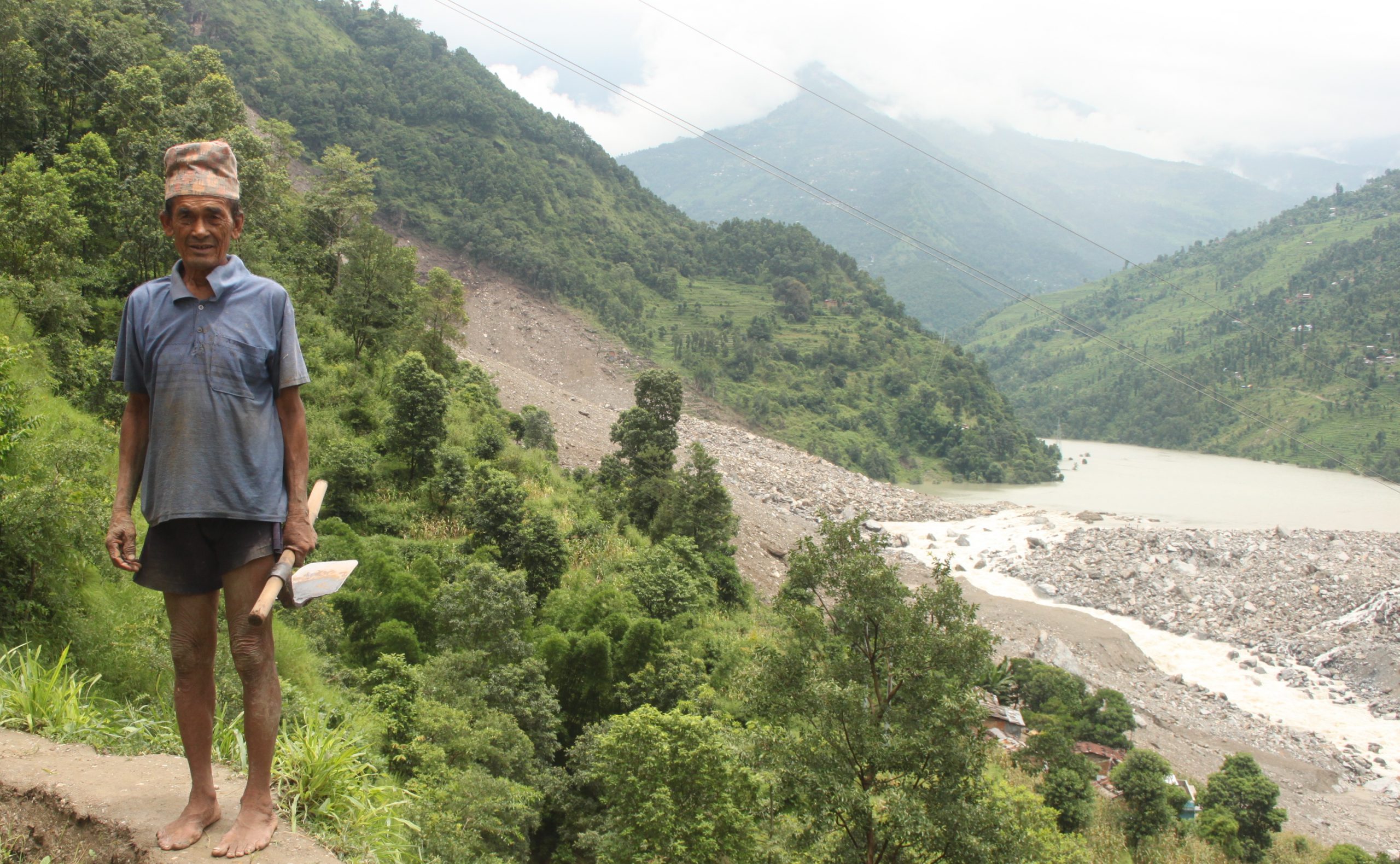A team of engineers from the Nepal army – aided by experts from Nepal and India – set off two dynamite blasts in an effort to clear the landslide and let the water flow. But they were only partially successful. Water was still accumulating behind the landslide on Sunday, and the area had already turned into a huge lake. The fear is that the ever-increasing weight of the water will lead to an outburst from the dam created by the landslide. That can lead to a huge flash flood, affecting thousands of people downstream in Nepal and India.
156 people died in Saturday’s pre-dawn landslide. Rescue workers have only found 33 bodies from the debris of landslide-hit settlements, but the other 123 missing have been declared dead by Nepali authorities. Residents of the affected area placed the number of missing at above 150 on Saturday. Rescue operations were hampered on Sunday as it kept raining heavily and there was a second smaller landslide in the same area. In the middle of the South Asia monsoon season, rescue workers were unsure about how soon they would be able to reach all affected villages.
Sunkoshi is a tributary of the Koshi, a transboundary river that flows from Nepal to India before joining the Ganga in the state of Bihar, where a major flood alert was sounded on Saturday, within hours of the landslide.
According to Nepal government officials, the risk of the dam bursting and leading to a flash flood was still high on Sunday, but the risk had been reduced to some extent, as some of the accumulated water had flown downstream after the two blasts were carried out.
“Though some water is flowing above the dam created by the landslide, a huge amount of accumulated water is still there. The risk (of a flash flood) is still high, but not as high as it was yesterday,” Jhankanath Dhakal, Chief of the National Emergency Operation Centre of Nepal’s Ministry of Home Affairs, said early Sunday afternoon.
According to officials in Nepal’s Department of Hydrology and Meteorology, the water level in the lake formed behind the landslide was decreasing on Sunday. Live discharge data provided by the department showed that on Sunday afternoon, the water level in the river just downstream of the landslide was 2.19 metres, with a discharge of 158 cubic metres per second. So there was some water getting through the landslide. However, hydrologists in Kathmandu – about 100 km south-west of the affected area – said the water accumulated upstream of the landslide by Sunday afternoon would be about 7.5 million cubic metres.
The area downstream was declared a potential crisis zone by the governments both Nepal and India and fresh alerts were issued on Sunday, the same day India’s Prime Minister Narendra Modi reached Kathmandu for a much-discussed visit. Modi is expected to push for joint hydropower development by Nepal and India, a source of worry to many in Nepal.
See Mistrust muddies India-Nepal water relations
Right now, of course, the crisis has to be tackled first, and jointly. Bamdev Gautam, Nepal’s Home Minister, said, “We have asked the Indian government to open all 56 gates of Koshi Barrage at the Nepal-India border and informed them about potential threat to the areas in Bihar.” Thousands of people in downstream Nepal have fled to villages in higher altitudes, while the authorities have evacuated around 8,000. Officials in India’s National Disaster Management Authority said in New Delhi that over 50,000 people along the Koshi had already been evacuated.
The massive landslide occurred on 2nd August before the crack of dawn and swept away three villages –Damsite bazaar, Kagunegaun and Tekanpur – before blocking the river. A part of the Araniko highway that links Nepal to China was swept away. Three hydropower projects with capacity to generate 57 megawatts were inundated.
Continuation of past landslide
According to experts in Kathmandu, the region where the landslide occurred is highly vulnerable, and there have been small landslides in recent years. But little attention was paid to stablising the hillsides. “There were large rocks there due to previous landslides. Rainfall weakened the landmass, resulting in the slip of almost an entire hill,” said Narendra Khanal, Professor of Geography at Tribhuvan University. He had carried out research in the area last year.
According to Meghraj Dhital, Professor of Geology at Tribhuvan University, the landslide was dry, so it could be called a rock avalanche. “It travelled almost half a kilometre, sweeping away some villages and ended up damming the river. There are big boulders still lying on top of the landslide and the possibility of another landslide shouldn’t be ignored, so the priority for now should be safe drainage of water to reduce the threat of a dam burst.”

